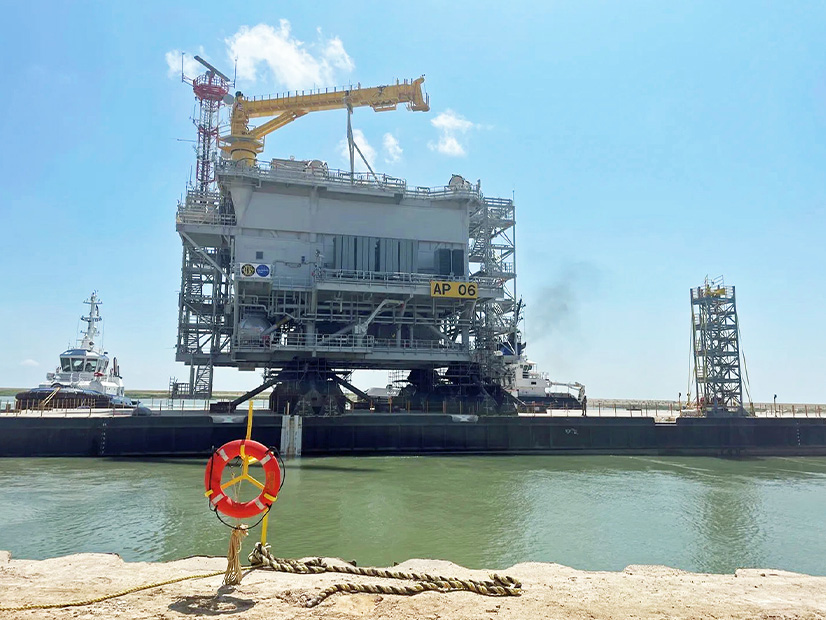The Biden administration’s decarbonization objectives have prompted gas and electric utilities to look at using hydrogen not only for energy storage and generation, but also as a consumer fuel, delivered to homes and businesses blended with natural gas.
Hawaii Gas, a small Honolulu utility that delivers both pipeline gas and compressed propane to about 60,000 customers, is a pioneer in delivering blends of 10 to 15% hydrogen in the synthetic gas it has been producing for more than 50 years at a plant adjacent to the only refinery in the state.
The hydrogen percentage wasn’t planned, but rather an expected byproduct of the process used to make the fuel from one of the refinery’s products, explained Kevin Nishimura, vice president of operations, during a Wednesday webinar produced by RENMAD.
“At that time, we decided that rather than stripping off the hydrogen from the gas, we wanted to see if it were possible to just leave it there, because hydrogen is energy too, right?” Nishimura said. “So instead of investing money in removing those molecules, we [decided] maybe we can keep it. We did some testing, some research and decided that concentration of hydrogen and gas would not affect appliances.”
The company has about 22 miles of 16-inch seamless steel pipelines running at between 350 and 480 psi, just under the industry’s standard of 500, said Nishimura, explaining that hydrogen’s deleterious effect on steel pipelines is more likely to occur at higher pressures.
The company’s 1,100 miles of distribution lines to homes and businesses, about 12 psi, are a combination of steel and high-density polyethylene and “are pretty standard for natural gas service,” Nishimura added.
“So, nothing really interesting to report other than the equipment and the pipelines that we operate here in Hawaii are just like those in the mainland for natural gas service.
“All of our customers have been buying appliances made for natural gas service, whether it be cooking equipment, water heaters, boilers, our favorite tiki torches — all designed for natural gas service, and all have performed well and safely over the 50 years with our blend of typically 10 to 12% hydrogen. We have not seen any impact to the appliance life cycles or their performance or their safety.”
Nishimura said the only exception is that the company has never delivered gas to a customer using a gas furnace because there are no furnaces in the state. Looking to the future, the company is seeking to deliver a blend of renewable natural gas and low-carbon hydrogen, he said.
Nishimura was one of four speakers representing gas utilities, including those from NV Energy, Southern California Gas, and Pacific Gas and Electric.
Christopher Dancy of NV Energy said the utility is planning to store hydrogen made from electrolysis using solar power, retrieving it to fuel natural gas plants when solar power is low.
“Hydrogen storage provides us with interesting opportunities and helps mitigate some of the problems that are prevalent with renewable resources. … You can utilize excess power to produce hydrogen and then store that hydrogen to smooth out the need of power daily. And it’s able to provide longer-term storage solutions,” he said.
But hydrogen pipelines, as well as high-pressure storage, are issues that must be overcome, he said.
“As you increase hydrogen pressure in pipelines, for example, I think the likelihood to having cracks or issues with the pipelines increases. And so if there are improvements to metallurgy or pipeline infrastructure or storage infrastructure, that’ll help enable the storage of high-pressure hydrogen without having some of the problems that exist today.”
Jamie Randolph, hydrogen manager for PG&E, said the company has prioritized hydrogen blending as part of its 2030 climate goals.
PG&E is working with Energy Vault, a Swiss-based energy storage company, to build a microgrid that will have both battery and liquid hydrogen storage, along with a fuel cell. The microgrid will be capable of powering about 2,000 customers in the Northern California city of Calistoga for about 48 hours.
“This is the first of its kind integrating a short-duration battery system for grid forming and black start capabilities along with long-duration fuel cells using green liquid hydrogen, so there’ll be storing liquid hydrogen on site there,” Randolph said.
PG&E is also working on a large-scale hydrogen blending project dubbed “Hydrogen to Infinity” using blends of hydrogen and natural gas in an isolated transmission system in Lodi, Calif., testing the impact of the blends on pipelines. The blends will be used to fuel a modified gas turbine.
“A lot of it’s been done on paper studies and lab environments, or on a small scale,” Randolph said. “We want to bring this to a large scale and see how it works in a real-world environment.
“It’s a stand-alone system. It will not be serving their entire system. It’s only going to serve an electric generating facility owned by the Northern California Power Agency, one of our project partners. The turbine that they have at this facility can already blend up to 45% hydrogen.”
Yuri Freedman of SoCalGas reviewed the company’s plan to build a hydrogen pipeline from solar farms in the Mohave Desert to Los Angeles. (See SoCalGas Proposes Hydrogen Pipelines.)
“We are now in phase 1 of the investigation of the feasibility of this pipeline,” Freedman said. “We’re involved in the pre-engineering design and environmental review and expecting to conclude this phase and submit [a plan] to the California Public Utilities Commission in about a year.”
Freedman said California’s utilities are not the only utilities working to integrate hydrogen into their systems because of the realization that hydrogen is a clean fuel that can work as a storage medium with renewable power generation.
“If you look at the historical data, it takes usually a long time for the new commodities to enter the energy mix at scale. If we’re aspiring to execute an energy transition in a compressed time frame, we really have to focus on these clean molecules,” he said.
